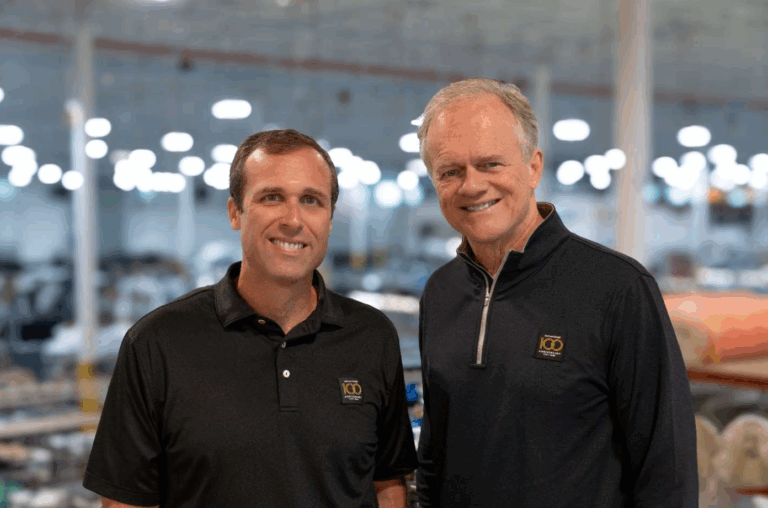
Most of us who consider systems integrations think primarily about how functional or technological systems impact fully integrated products, such as boats. But despite the fanfare that innovative systems bring to product launches, there are hidden systems inside our businesses that we tend to undervalue.
You can find several calls for improvements to systems throughout past issues of Soundings Trade Only. I wrote about systems thinking in July 2023, with a focus on supply-chain systems that necessitate participation from dealers and manufacturers. Wanda Kenton Smith penned a column this past March about the balance between sales and marketing systems. Editor-in-chief Gary Reich wrote in that same issue about the boat-delivery process.
The point is twofold: Systems can be found everywhere in our business, and opportunities for systems innovations and improvements can be found in all of our day-to-day operations.
These improvements aren’t just opportunities. Sometimes they are necessities. When your business grows but systems remain stagnant, growing pains are a flag that it’s time to adjust the system. Entrepreneurs who build successful organizations know this quite well. They start with a dream and must build awareness through marketing. They get some sales and put the business into motion. But then they have to make decisions. Do they hire a marketing person or a salesperson?
Maybe they choose a marketing person, and they keep the sales role for themselves. The business continues to grow and demand more of the founder’s time. So they hire a salesperson, who needs to learn the product, the industry, the competition, the customers and, yes, the company’s internal revenue generation system for lead generation, lead nurturing, closing sales and providing customer service. The business grows even more.
The salesperson knows he could sell more if the founder invested more in marketing. The marketing person is tapped, though. That’s when the marketing person becomes a marketing department. Marketing team members are hired for specialized roles in social media, website management, advertising and so forth. More marketing power leads to more leads, and a higher need for lead nurturing and closing business. There’s also greater demand for customer service. So more sales and customer support team members are hired. And the cycle continues, on and on.
As our businesses grow from their early days, they change. At first, the system resides mostly in the brain of the entrepreneur. Later, the system needs to be documented, visible and followed by everyone. That’s when decision-making tends to become decentralized. And because most businesses fail to document, share and train their teams on their revenue system, people tend to lose touch with the point of the system itself. Salespeople become focused on budgets or commissions; marketing people want freedom to use their creativity; and the entrepreneur just wants the machine to keep running effectively.
The business needs a system that maintains focus on driving revenue — a system that inspires sustainability and growth for the business and the people within it.
Marine dealerships in today’s market need established, documented revenue systems that provide consistency and predictability. Four years ago, a dealership needed a system that could withstand the onslaught of the rapid growth that the pandemic fueled. The right system with the right discipline would never have allowed us to abandon our boat-delivery processes.
A year and a half ago, we needed revenue systems to help us maintain diligence and effectiveness as we evolved into a slower, post-pandemic marketplace. The right system with the right discipline would never have allowed us to find ourselves relearning how to generate leads or encouraging our salespeople to learn how to sell again.
Instead, a strong revenue system should be the foundation upon which any dealership is built. A strong revenue system should include documented insights such as target market personas, lead generation strategies, a marketing funnel, how you hand off leads, how you nurture leads, how you close leads and collect revenue, and how you measure success. Owners should train every single person on this system as part of the onboarding process. Everyone should know how to generate and nurture leads, how to close a sale, and how to provide customer service.
This system is critical to organizational health and financial stability. While it may not have the fanfare of an innovative system built into a boat, those innovative systems don’t sell themselves. Business owners need good, quality team members who use a good, quality system to make it happen.
At the Marine Retailers Association of the Americas, we have several methods for helping with this. Our Dealership Certification Program offers templates for systems and processes. Our library of online courses includes 260-plus courses (many in sales and marketing) for owners and team members. The newest course package includes such topics as “Use Facebook and Instagram to Generate Leads that Turn Into Buyers,” “Selling Value and Experience in the New Economy” and “Overcome Objections with Next-Level Deal Desking and Financing.”
New for this year, the MRAA’s annual conference and expo, Dealer Week, will offer an entire pathway of educational content on sales topics and an entire pathway of marketing topics to help attendees innovate and evolve revenue-generating systems.
As a business returns to growth, its systems must evolve. The MRAA’s resources have the answers to help every step of the way.
This article was originally published in the May 2024 issue.












